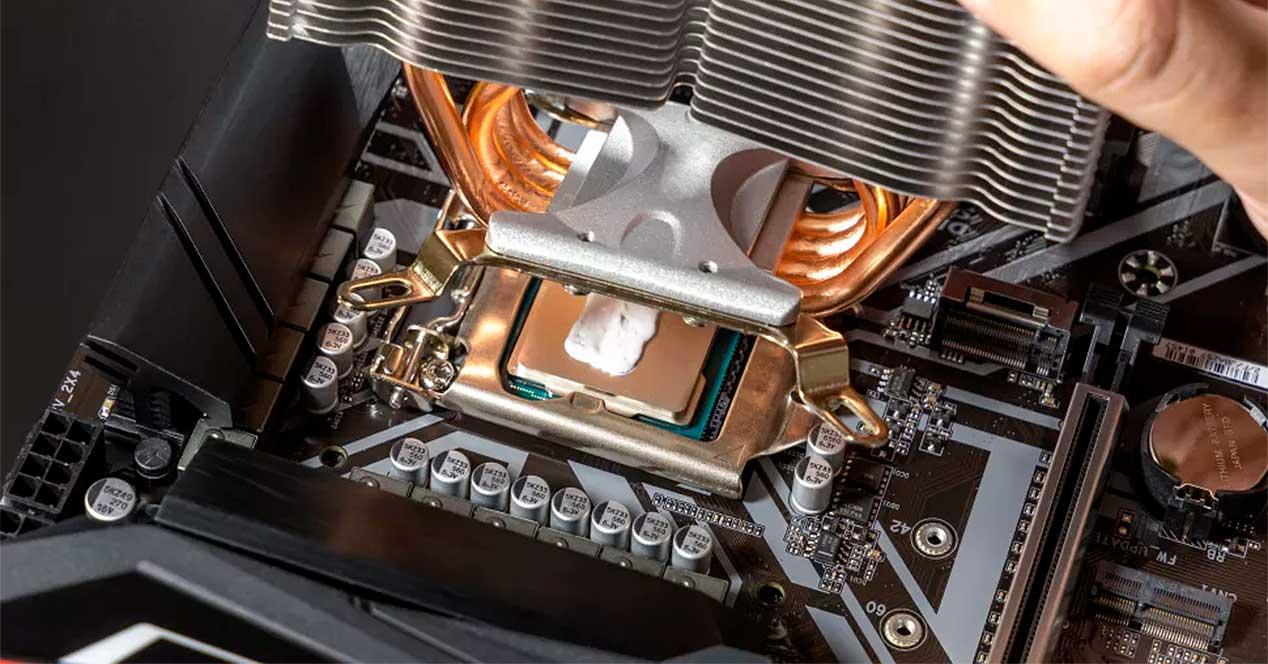And it is that many users process the RMA directly after verifying that their refrigerators are not touching the IHS, which is not uncommon, but when practically the cold plate is on … Something happens. Who is guilty? Why is this happening now and not in other sockets?
The LGA 1700 socket problem: poorly designed?
New data is showing a reality many won’t like and it’s nothing more than a double trouble. Yes, it’s double, because motherboards (some) and the CPUs themselves have them, so the solution to the problem will be very complicated and we can explain ourselves.
As we are well aware, at both Intel and AMD, the IHS ends up being mostly concave because the solder between it and the die makes it imperfect by a few microns resulting in contact issues with totally straight surfaces. Manufacturers have alleviated this problem by correcting their cold plates and making them convex in the center, providing an almost total solution to the problem.
What happens now so that almost no possible refrigeration hits the IHS properly? Well here’s the news, since it was detected that when installing the CPU in its socket, the motherboard collapsed due to a very curious problem: the excessive pushing force and the tightening of the socket for the CPU.
That a motherboard bends, is it normal?


We are talking about something tangible, already in millimeters as can be seen and which oddly enough has always happened, except that until now it was the fault of the user or the manufacturer for putting too much pressure on heat sink or water block. Oddly enough, the solution is a larger-than-usual and stiffer backplate that prevents the motherboard from bending or bending in the socket area.
As a detail and curiosity, even if a full solid is used, the backplate and its hardware must first be fully installed, then the processor is installed, and not the other way around. This almost completely corrects the problem and ensures that the contact is very good and also protects the plate, but as always there are several “buts”.
The first is that this happens on motherboards with a Poor quality PCB and with a lower number of layers, where they are generally observed in the entry range and in some averages. Secondly, almost no manufacturer provides quality solid metal backplates, so everything is complicated and ultimately, and although said backplate meets the requirements, it must be that can be screwed before installing the block
This, which seems obvious, is not the case because there are systems which require installing the block at the same time that it is screwed through the backplate, it is a simple fastener in order to do not damage the plate and provide a supposedly improved rigidity. to the assembly.
If you are wondering why this is happening in this socket, it is simple: the change in the type of power distribution and the high consumption is a determining factor that requires more contact between the CPU and the pins.
We’re assuming Intel has taken this into account and informed motherboard and cooling makers, but it seems very few have taken it seriously in light of all the issues we’ve seen over the past month. The choice of the plate and of the dissipation has therefore become a key issue to be taken into account.











